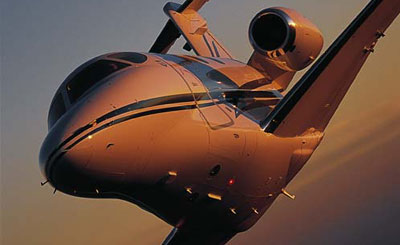|
| In the late 70's Beech had a tired lineup of piston and turbo-prop airplanes. Crosstown rival Cessna had a lineup of business jets with more versions on the drawing board. Drastic measures were needed to catch Cessna. Drastic measures were needed to beat Cessna. |
|
| Rather than build another "me-too" jet, Beech decided to leap-frog Cessna with technology, via the composite Starship. |
|
| Against the recommendations of most of the Beech senior engineers, the project was launched. It turned out to be a brilliant move, at least for Olive Ann Beech and some of her family members, because Raytheon took the technology bait and paid a handsome price for the consistently profitable tin bending aircraft company. Now, this tech oriented company could take Beech to new heights. |
|
| Even after the sale was completed, several of the Beech engineers pleaded with Raytheon to kill the Starship. They were told to "get with the program or get out of the way". Many left or were run off. |
|
| Somebody should have listened. Before the project was shelved, Raytheon dropped between $750 million and a billion on the project. Fifty-six Starships were built, some are in service, quite a large number never sold are in storage, useful only as collateral for the cash strapped Raytheon company. |
|
| Perhaps even worse, while Beech chased their composite dream, Cessna had another 10 -15 years to expand their product line and increase market share. |
|
| To avoid getting too far behind, Beech bought the Diamond program from Mitsubishi. An airplane the Japanese could never figure out how to sell at a profit. Then later bought the Hawker line from the British. |
|
| Stop gap measures until Beech could get the Premier and Horizon certified and in production. Both feature composite fuselages and aluminum wings. After years of program slippage and cost overruns, the Premier was certified and put into production. |
|
| These programs prove Stephan Wilkinsons conclusions written in 1995 and published in Aviation Consumer are still valid today: |
|
| "You can reduce weight and you can reduce cost, but neither in 1968 nor in 1995 is it possible to do both simultaneously with composites." |
|
| For starters, the fuselages are wrapped over segmented mandrels with pre-impregnated carbon fiber strips using a $ 6,000,000 computer controlled fiber placement machine made by Cincinnati Milicron. To achieve a smooth exterior surface, the plug is placed in a clam-shell mold and cooked in the huge autoclave Beech acquired for the Starship. |
|
| What emerges is a very light weight, smooth and thin shelled structure that comes with some add-ons. Since it is made in one piece, as in a cigar, the fuselage sits on top of the wing resulting in a huge and unattractive wing fairing. |
 |
|
|
| Another problem is excessive cabin noise. Lacking the noise dampening characteristics of an aluminum fuselage, which for pressurization purposes has a mastic type sealing compound between all of the mating surfaces and which reduces noise transmissions, the Premier fuselage has been described as "like being inside a guitar". |
|
| Solvable problems, but problems that erode the advantages claimed for composite structures. |
